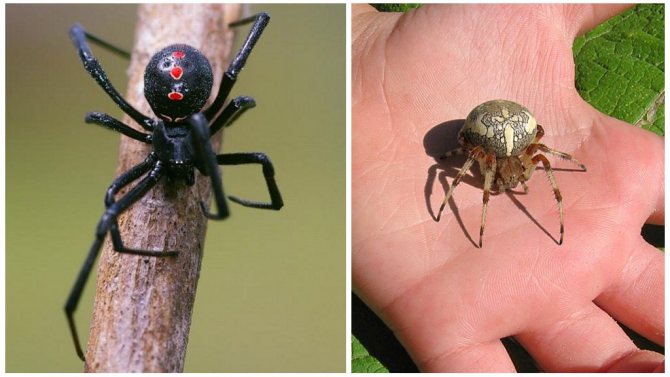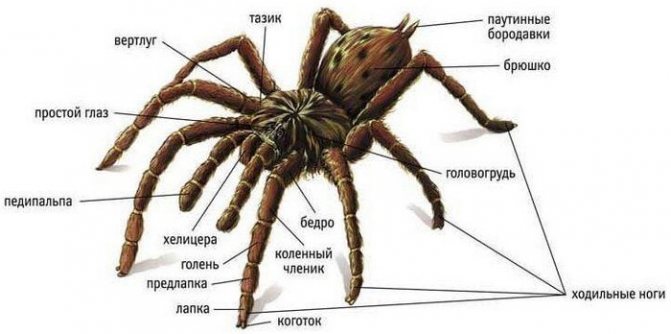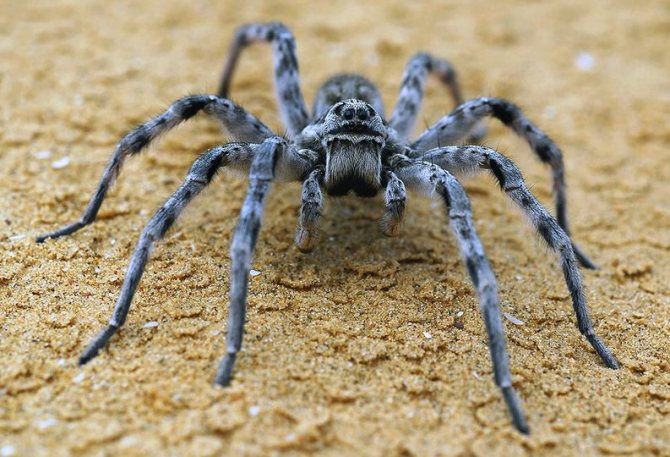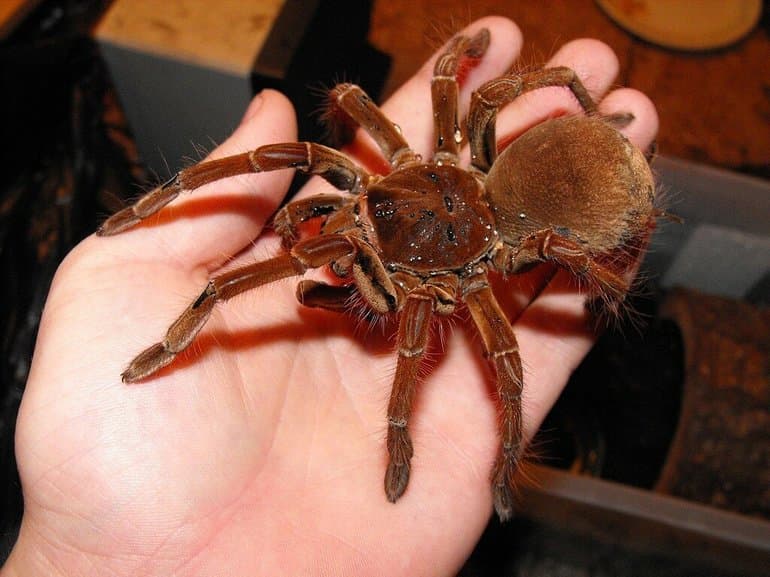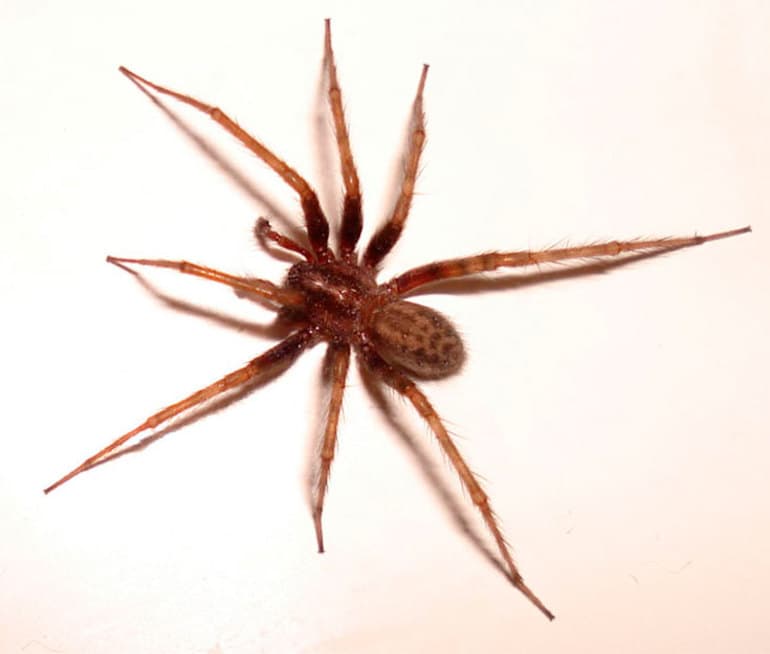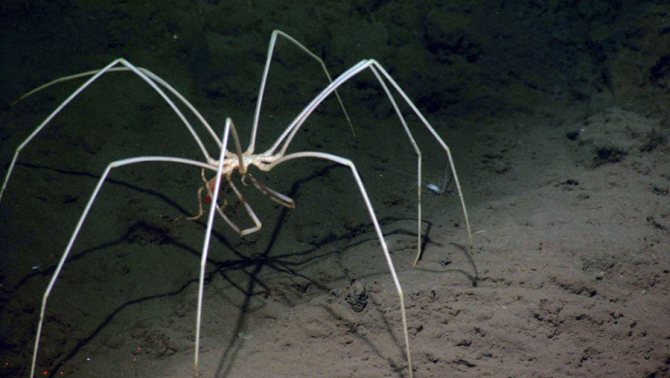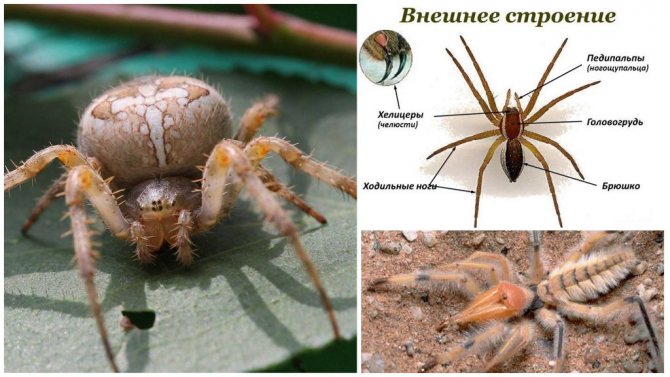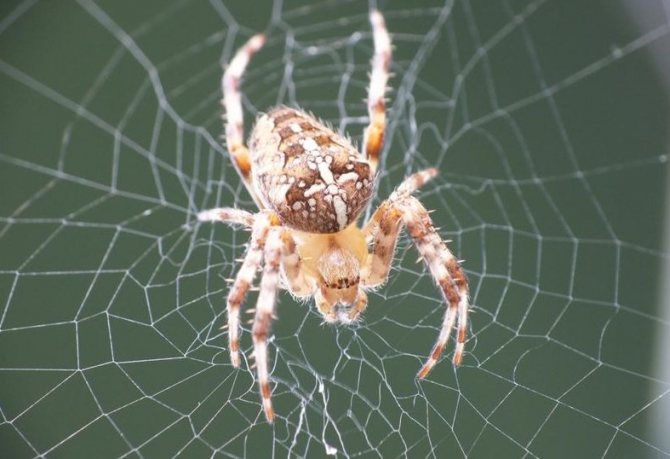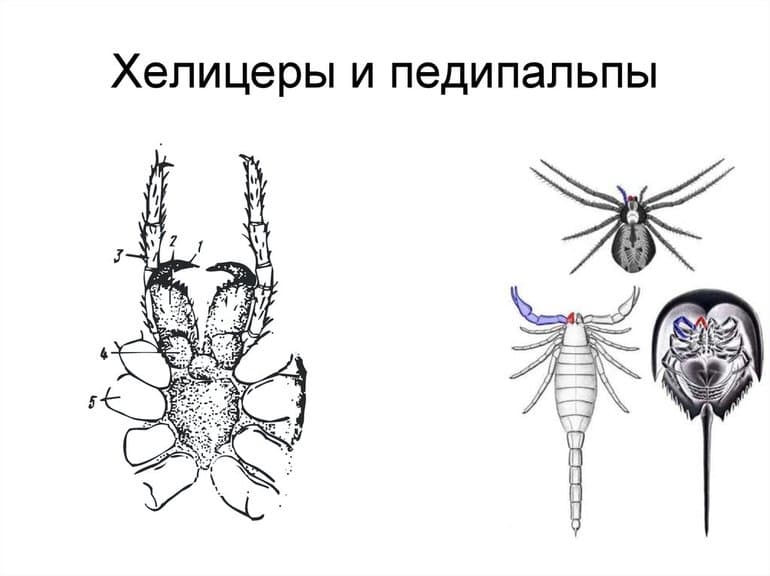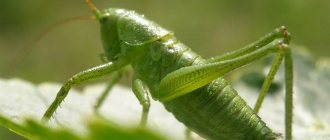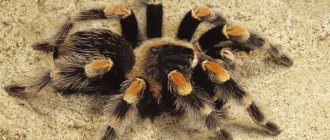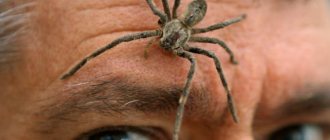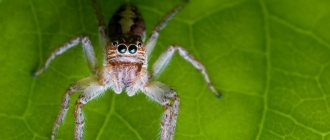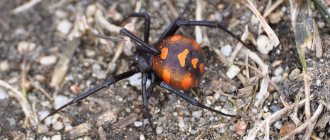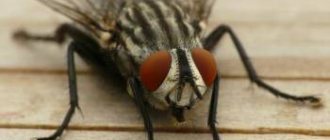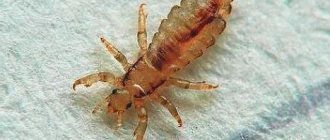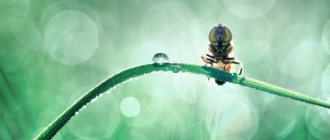How many paws does a spider have

If we take all the species found on our planet, then there are more than 40 thousand of them. They all differ in size, characteristics of life, appearance, color, etc. As far as we know, the spider has 4 pairs of legs, which are located on the cephalothorax, 4 pieces on each side. All legs are connected with the process of movement of the spider and do not perform any other functions.
Legs consist of:
- From the pelvic segments.
- From the trotters.
- From the thigh.
- From the knee.
- From the shins.
- From the calcaneal segments.
- From the paws.
Spider legs are armed with claws, spines, or have the appearance of pincers. The front pair of paws is the longest, the second pair of paws is the shortest, and the third pair can be described as medium in length. The back pair is almost the same in size as the front pair. In spiders, all legs are walking, with an average size of about 2 cm, although there are spiders with a leg length of about 15 cm, or even with a leg length of up to 35 centimeters.
Interesting to know! It is believed that the goliath spider and the hunter have the greatest leg length, which reaches 15 centimeters. The giant baboon spider and the Brazilian wandering spider have a leg length of about 9 cm.The length of the legs in the tegenoria is 7 cm, and in the nephil spider - 5 cm.
Difference from insects
The spider belongs to the class of arachnids, it is not an insect... Characteristic features of this species:
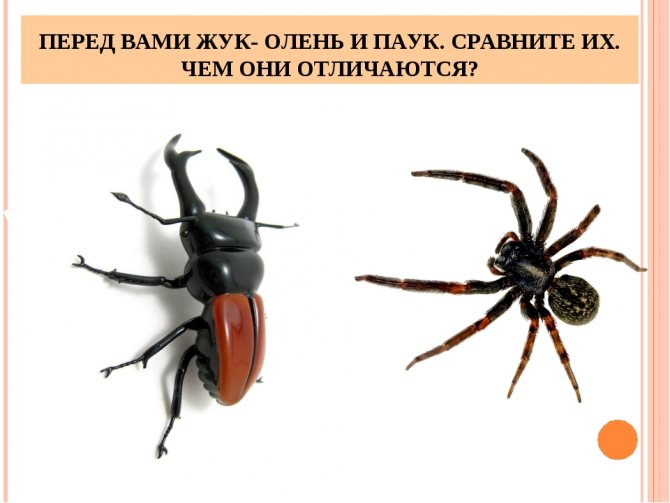

- The main difference between arachnids and insects is that the last 6 paws are located on the chest, and not on the cephalothorax. In addition to external differences, animals have different structures of internal organs.
- Centipedes are also not insects, as they belong to a separate species.
- If we compare the structure of the body of arachnids with other creatures, it can be more attributed to a scorpion.
Spiders that live in apartments cannot harm the human body. You need to pay attention to the conditions of sanitation. Animals live in houses where there is enough food to get them out, it is necessary to get rid of the root cause of the invasion.
Spider leg functions
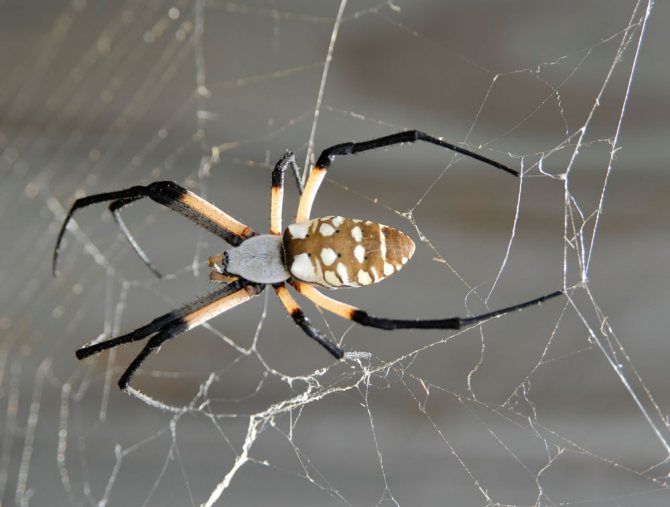

In all types of spiders, the legs perform the same functions and the most important is the walking one, which allows the animal to move in space and sometimes quickly enough. The main difference between the legs of spiders is their length and structure, which determines the way of movement and its speed. Therefore, spiders can crawl, move quickly, walk sideways and jump considerable (relatively) distances.
On each paw, you can see the villi, with the help of which the spider reacts, or rather interacts with the external environment. With the help of their limbs, spiders navigate in space, catch sounds and smells. Once in an unfamiliar place, the spider shifts its legs for a long time, studying the situation. Only after that does he decide to take the "first step".
The front pair of limbs performs a wide variety of operations. With the help of its front legs, the spider obtains food for itself, if necessary, it can dig a hole, weave a web, form a cocoon, plant the cubs on its back, etc.
Amazing facts
The spider world is very diverse. These are unique and charming animals:
- In the spider family, there is a separate subspecies called phrinas. It includes approximately 60 individuals. They have certain characteristics, the main one is that they do not know how to weave a web.They have rather large legs, and the forelegs intended for hunting are very strong.
- Spiders do not have a skeleton, there is only a hard shell. Because of this structure, the size of all arachnids is small. There are no large individuals that are shown in the movies. Otherwise, the animal would die under its own weight.
- It has been proven that the web is stronger than steel and other metals that exist in the world. Scientists are still unable to make it artificially.
- The number of eyes in spiders can range from 2 to 12, and not 8, as many people think.
- In the process of hunting, arthropods respond to vibrations. They can be recreated using a violin. To lure the spider out of the shelter, you just need to play the instrument.
- The population of Cambodia maintains the tarantula as a pet, consuming the arthropod as a food, as it is a great delicacy.
- All types of spiders make a web in the shape of a circle, and only a gladiator makes a square, and the web of a orb-web can reach up to 8 m in size.
Most people are terrified of spiders. This fear is called arachnophobia. However, in reality, these small representatives of arthropods have much more reason to be afraid of humans. Spiders are the most unusual animals living on Earth. They received such fame due to the features that nature gave them.
Chelicerae and pedipalps
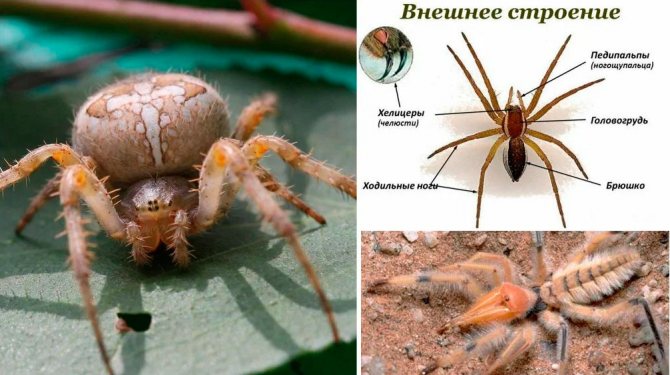

Some species of spiders have long chelicerae, which are slightly smaller than the front limbs. They are located in front of the cephalothorax and are often confused with paws, considering that a spider has 10 of them. The same is true in relation to pedipalps, the functions of which are to grind food objects. Pedipalps are movable tentacles, and cholicera are more like claws or claws.
Below in the photo you can see spiders in which both chelicerae and pedipalps are quite developed.
Neighborhood with people
Certain species of arachnids live in the neighborhood of humans. They live in places where there is enough food. Insects are usually eaten, but the diet will depend on the type of spider... Houses are most often found:
- Haymaker. Taking into account the subspecies, the length can vary between 3-12 mm. Moreover, his legs are 5 times the length of the body. He loves to make spider webs on windows, for which he is also called a window spider. To catch a prey, the animal needs to sit upside down near the spaced web. When the prey gets entangled in the nets, the predator rushes to it, bites, then injects poison.
- Tramp. They enter the house by accident. These spiders do not install cobwebs, they catch their prey on the go. When everything edible is destroyed, the arthropod leaves the house, moving on.
- Brownie. This is a small yellow specimen 6-12 mm long. There is a brown pattern on the body. Females are larger than males. Make a funnel-shaped web.
In the house, spiders appear at high humidity and a large number of insects that rapidly multiply under these conditions and move from room to room: mosquitoes, fruit midges, beetles.
Why does a spider need 8 legs
According to experts, in order to perform all vital functions, 3 pairs of legs would be enough for a spider. Most likely, one pair is like a spare, since spiders often find themselves in difficult situations. As a consequence, one pair can be torn off or injured. In natural conditions, there are many individuals that, for one reason or another, are deprived of one or two pairs of legs, which often leads even scientists to a dead end.
An interesting moment! If a spider for some reason has lost some paw, then a new one will not grow in its place, although with 3 pairs of legs the arthropod continues to exist normally, performing its main functions.
Feet sizes
The length, thickness and other dimensions of the legs depend directly on the lifestyle of the animal.Both the first and the fourth pair of legs can be the longest. The second pair is always slightly smaller than the first. The third pair is the shortest. In some species, due to the fact that in the first two pairs they catch and hold prey, the front two pairs are longer than the rear ones.
In structure, the front legs are much thicker than the rest of the limbs. The thighs are club-shaped. The feet are attached to the heel, while forming an angle with the axis of the leg itself. This structure in some species allows the use of the front pair as tactile organs. They use the other three pairs for movement.
Spider experiments
At all an experiment was recently carried out in France, during which scientists tried to figure out what would happen to a spider if it suddenly lost one or two of its legs. It turned out that they did not even notice their loss.
The experiment was carried out as follows: several spiderweb representatives were planted in a small containerin which all the legs are in place. In another container, spiders were planted, which for various reasons lost one or two of their legs. They were watched for a while. Scientists found that spiders in both containers performed the same way for weaving a web, obtaining food, and other vital procedures.
But the results of this study can be easily explained: nature itself took care of the spiders and gave them a back pair of legs in reserve if the front legs were suddenly lost. By the way, there are a lot of such individuals. But unfortunately, it is almost impossible to meet a spiderweb with 4 or 5 legs. Usually, such a loss can threaten him with the loss of his life.
What is the difference between a tick and a spider?
Ticks are also arachnids. Therefore, the tick is a kind of mini-spider. Nevertheless, an ordinary person needs to be able to distinguish between these animals, since most of the eight-legged trapping net builders that we encounter are not very dangerous to humans. But ticks are much more dangerous. They are carriers of a number of diseases:
- tick-borne encephalitis. Inflammation of the brain, in which a person dies quickly enough;
- Lyme disease. Inflammatory processes that affect the internal organs of a person;
- allergy. A tick bite can even end with anaphylactic shock, during which death can occur in a few minutes.
Naturally, not every tick is infected or can provoke allergic reactions. You should not panic when you see a tick on your body. Nevertheless, you need to be able to distinguish an ordinary spider from a tick, which is sometimes quite difficult to do. After you see bites from ticks, it is advisable to take a sample of the arachnid to the laboratory in order to identify the causative agents of these diseases, and consult a doctor yourself.
But how to distinguish a tick from its relative? In fact, the principle is very simple. Despite the fact that the tick also has 8 legs, this arthropod has only one large peritoneum. Also, if you look at spiders, then for the most part they have a convex body. In ticks, it is flat (if the animal has not yet eaten blood).
In general, we realized that both species of animals have four pairs of legs. Moreover, they differ in body and lifestyle. Indeed, unlike their relatives, ticks feed on the blood of people, and do not knit webs from a cobweb. Not so tricky differences, it turns out, right?
We constantly intersect with spiders - in nature, in the country and even in our apartments. They are everywhere, but most of us know little about them. For example, how many paws does a spider have? Or what does he eat, especially when the apartment is absolutely clean? What is arachnophobia and what is its cause? We will answer these and many other entertaining questions today.
Spider life is not as easy as it might seem at first glance.
We study arachnology
To receive you need to exact answer to the question about how many paws a spider still has, you can use one of two ways:
- Study of information that has already been confirmed earlier by observations.
- Own observation.
Of course, the second method is the fastest, since all you need to do is catch the spider and just count the number of legs. But you can make a mistake!
Unfortunately, not all people know that the spider has more than legs, but also powerful mandibles, which are usually inherent in predators. Very often they are also counted, like the legs. It is known that the spider uses these mandibles to capture and then hold on to its prey. They are located on the head. But the legs of representatives of spiders are located on the middle segment of the body, which is also called the cephalothorax.
As for the abdomen itself, it is completely free and there are no limbs on it, except for gill legs and then atrophied. But these legs have changed so much over time that they turned into ordinary spider warts.
If you go looking for information that is always available, you should start with toxicology. It is known that sometimes spiders are attributed to insectsbut this is not true! If mistaken for insects, then they should only have 3 pairs of legs. But it is known that these creatures belong to a class separate from insects, which in their characteristics are much closer to scorpions.
If you exclude all mistakes and misconceptions in this matter, then you can easily find the answer to the most important question about how many legs a spider has. It is known that they, regardless of the species, have exactly 4 pairs of legs.
Classification
There is no single system for classifying spiders. One can only correlate their specific types according to the density of distribution, the rarity of a particular species, safety or threat to human life and size.
Safe spiders
This species includes representatives of the animal world that do not harm people. They are either not able to bite through the skin at all, or their poison does not pose any threat.
Such arachnids include:
- crosses,
- tarantulas,
- haymakers (braids),
- horses,
- brownies.
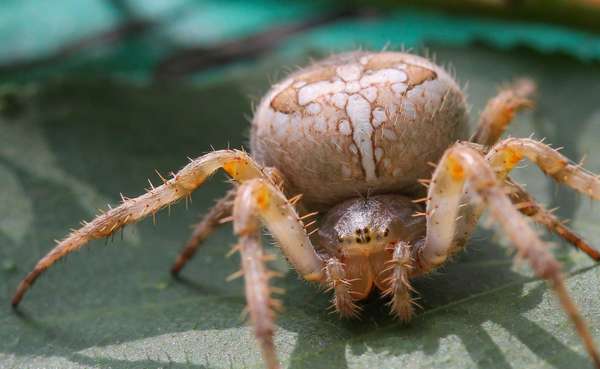

Spider cross
Deadly poisonous
In most cases, spiders do not pose any threat to humans. Especially if you don't try to deliberately make him angry. But there are also those with whom it is better not to meet.
Arachnids that are truly poisonous and dangerous:
- karakurt,
- black Widow,
- brazilian runner spider,
- banana spider,
- brown hermit.


Brown recluse spider
Rare
Some spiders can be found everywhere, while others are very rarely seen.
Such distinctive arthropods include:
- nephil-gold-weaver,
- baboon spider,
- Sydney Spider Funnel Web,
- Colombian purple tarantula,
- spider-phalanx,
- giant crab.


Spider-Spider
Small
Like all representatives of the animal world, spiders tend to vary in size. And if large arthropods cause fear and disgust, then baby spiders can even cause affection.
These babies include:
- anapistula,
- patu digua,
- side walker,
- Bagheera Kiplinga,
- abacarus histrix.


Sidewalk spider
Large
And next to these crumbs, there are just real giants who cannot be overlooked.
Particularly large species:
- tarantula Terafosa Blonda,
- orb-web-nephila,
- tarantula,
- giant crab,
- banana spider.
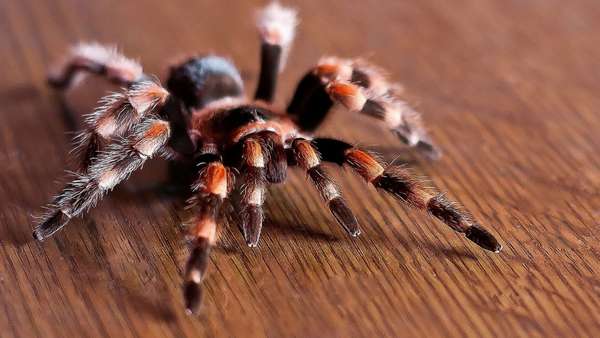

Tarantula
Water beetles
All aquatic insects are of interest from the point of view of the structure of the limbs. They demonstrate a completely different, but also unique, adaptation. Science wondered how they can be on the surface of the water and not sink? It turned out that the water beetle has a kind of oars on its hind legs.
Special hairs have grown on them, with which the insect makes rowing movements.So it floats on the water. Some species are equipped with thickened and widened segments (this is the last section of the leg). Thanks to this structure, they can perfectly float on the water. Although these insects prefer to live in calm waters. It is difficult for them to deal with a strong current. The little creature does not have enough strength for this.
Limb functions
Arachnids use their limbs for more than just locomotion. In addition, in some species, they serve:
- for digging the soil;
- in the role of tactile organs;
- for food retention;
- as protection;
- in females to maintain a cocoon;
- for building a spider web.
Do you know how many pairs of legs are involved in movement? It turns out that the first and third pairs of legs on one side of the body move simultaneously with the second and fourth on the other side. The front limbs do the pull-up and the hind-limbs push.

